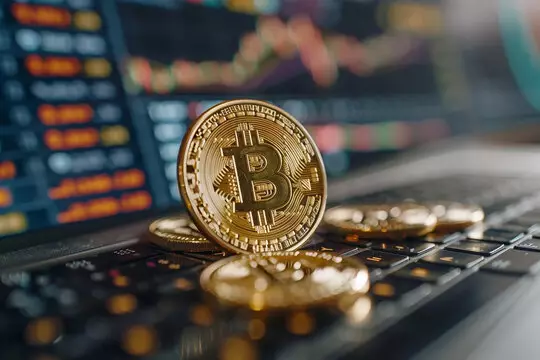Bitcoin enthusiasts may rush to interpret an asset’s entry into oversold territory as a bullish signal, but this viewpoint often betrays a fundamental misunderstanding of market mechanics. The latest observations from industry analysts indicate that more caution should be applied when navigating these turbulent waters. Quinten, a noted crypto analyst, claims that Bitcoin, having recently entered an oversold zone, is indicative of a greater downturn than the surface-level data suggests. The caveat here is that many investors remain blissfully unaware of the implications of oversold sentiment, often mistaking short-term price corrections for long-term investment opportunities.
Analyst Dr. Cat brings an unsettling perspective to the conversation. He journeyed into the world of oscillators and price behaviors, articulating that the very reason Bitcoin finds itself in this oversold situation stemmed from heightened bearish trends. An oversold indicator, he argues, does not mean “buy now,” but rather highlights a potential catastrophe brewing just beneath the façade. This paradox challenges the conventional folklore that equates oversold conditions with imminent buy signals. It raises the critical question: are investors willing to ignore sound analysis for the sake of fleeting optimism?
The Bearish Reality Behind the Numbers
Dr. Cat’s assertions do not merely serve as a warning; they challenge the prevailing narrative that has captivated many Bitcoin traders. Instead of viewing the current market conditions as a chance to acquire discounted assets, he argues that the reality points to deeper structural weaknesses in the market dynamics. Bitcoin’s oscillators are mathematical constructs that reflect the market’s fear and greed. However, one must not overlook that these oscillators exist within a range that caps their predictive capabilities. Their current positioning suggests a precarious situation rather than a golden opportunity that adventurous investors might wish to seize.
Further complicating matters, Ki Young Ju, CEO of CryptoQuant, has shed light on Bitcoin’s supply versus demand balance. The prevailing bearish outlook is underscored by the alarming fact that current supply exceeds demand, signifying a troubling trend of selling pressure among held assets. This phenomenon, coupled with ongoing liquidations and profit-taking by whales, hints at a market poised precariously on the edge of further decline.
Understanding the Full Context
Contrary to popular belief, oversold conditions can persist for extended periods, particularly in a bearish market. While many hold onto the dream of a rapid price recovery, historical data speaks volumes about the fluidity of the market. Dr. Cat highlights that even if lower timeframes present oversold conditions, these indicators often lead to merely transient price rallies that fizzle out into greater losses down the line.
Quinten’s reference to past market behaviors reinforces this notion. It reminds us that while some may view declines as attractive entry points, the reality is that many altcoins, at their respective oversold points, faced drastically reduced valuations. The focus should not solely be on trying to time the market, but also on understanding the contextual factors that contribute to these price movements.
Moreover, what Dr. Cat and Quinten reveal is a deep inconsistency in the approach many seem to take: buying on the ave of oversold cues without a clear overall strategy rooted in broader market sentiment. The stark reality that Bitcoin could continue its decline to new lows raises concerns about whether novice investors are adequately prepared for such scenarios.
The Illusion of Quick Gains
As the cryptocurrency landscape continues to evolve, understanding the interplay of market mechanics becomes increasingly important. The allure of quick profits can lead even seasoned investors astray when panic takes hold. In these shaky waters, many may find themselves unwinding their enthusiasm and rushing to the exits—all while dismissing the crucial insights provided by sharp analysts like Dr. Cat.
The narrative that Bitcoin is merely experiencing a temporary setback is far too simplistic in a climate rife with potential calamities. For those operating on an investment strategy anchored solely on the assumption that oversold conditions signal an immediate turnaround, the sobering reality is that such interpretations might lead to financial ruin. The question remains: will the community heed these warnings and adopt a more conservative, informed trading strategy?
While it is undeniable that cryptocurrencies can yield remarkable returns, the understanding of market complexities is essential in navigating the tumultuous waters ahead—a lesson many appear reluctant to learn.

